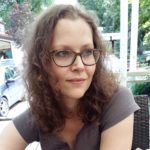Link to Pubmed [PMID] – 20646729
Virology 2010 Sep;405(1):120-8
Marine bacteriophage PM2 infects gram-negative Pseudoalteromonas species and is currently the only assigned member of the Corticoviridae family. The icosahedral protein shell covers an internal protein-rich phage membrane that encloses the highly supercoiled dsDNA genome. In this study we investigated PM2 entry into the host. Our results indicate that PM2 adsorption to the host is dependent on the intracellular ATP concentration, while genome penetration through the cytoplasmic membrane depends on the presence of millimolar concentrations of calcium ions in the medium. In the absence of Ca(2+) the infection is arrested at the entry stage but can be rescued by the addition of Ca(2+). Interestingly, PM2 entry induces abrupt cell lysis if the host outer membrane is not stabilized by divalent cations. Experimental data described in this study in combination with results obtained previously allowed us to propose a sequential model describing the entry of bacteriophage PM2 into the host cells.

